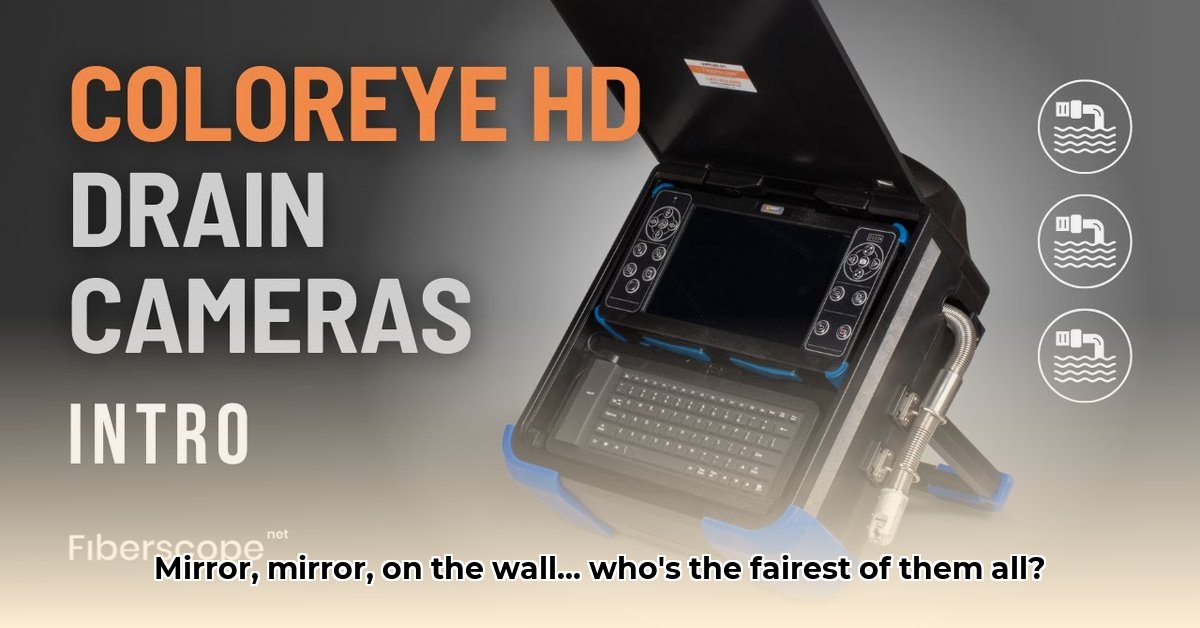
Coloreye's Vertical Integration and Diverse Product Portfolio
Coloreye, established in 1985, manufactures high-quality mirrors and coatings, distinguishing itself through a vertically integrated business model. This strategy, encompassing control over the entire production process from raw materials to finished goods, offers potential advantages in quality control, production speed, and cost efficiency. However, a comprehensive assessment requires access to Coloreye's financial data to quantify the exact impact of this strategy on profitability. How significant is the cost reduction realized through vertical integration, and what percentage of production time is saved?
Coloreye's product portfolio is notably diverse, spanning applications across various sectors. From automotive rearview mirrors to specialized marine and home décor applications, Coloreye offers a wide range of optical coatings tailored to diverse needs. This broad market reach positions Coloreye as a versatile supplier capable of serving both large-scale manufacturers and individual consumers.
Coloreye's Diverse Coating Technologies
The table below showcases the breadth of Coloreye's coating capabilities:
| Coating Type | Applications | Potential Advantages |
|---|---|---|
| Anti-Reflective | Eyeglasses, camera lenses | Enhanced clarity, reduced glare |
| High-Reflection | Lasers, telescopes | Increased light reflection, brighter images |
| Water-Repellent | Car mirrors, safety glass | Improved visibility in adverse weather, easier cleaning |
| Hydrophilic | Medical tools, lab equipment | Improved wettability, potential biocompatibility benefits |
| Metal | Decorative mirrors, industrial uses | Durability, excellent reflectivity |
| ITO (Indium Tin Oxide) | Touchscreens, solar panels | Electrical conductivity and transparency |
| Revo (Revolutionary) | Sunglasses, architectural glass | UV protection, glare reduction |
| Filter Glass | Specialized scientific instruments | Precise wavelength control for specific light transmission |
This diverse range suggests a mastery of various coating technologies, allowing Coloreye to adapt to evolving market demands and customer specifications. However, the specific performance characteristics of each coating—such as durability and scratch resistance—require further investigation for a complete evaluation.
High-Tech Manufacturing and Market Positioning
Coloreye employs four automated coating production lines, a significant investment in automation enabling high-volume order fulfillment and customized solutions. This technological prowess strengthens Coloreye's position as a versatile and efficient supplier. But how does this capacity compare to competitors? What is the throughput of each line, and what percentage of orders are custom requests? Further information is needed to precisely quantify their competitive advantages.
Assessing Coloreye's market standing currently presents a challenge due to limited publicly available data on market share, revenue, and overall performance. While speculation exists about their position within Taiwan, definitive conclusions remain unsubstantiated without verifiable market research data. Greater transparency regarding Coloreye's performance would be beneficial for investors, analysts, and potential business partners.
Future Opportunities and Risk Mitigation
Coloreye's future success hinges on several key factors. Increased transparency, through the release of key performance indicators (KPIs), would significantly bolster investor confidence. Strategic collaborations could unlock access to new markets and distribution channels. Continuous investment in research and development (R&D) is crucial to maintain a competitive edge in this rapidly evolving technological landscape. Furthermore, effective intellectual property protection strategies are essential. A proactive approach to exploring novel applications for its advanced coatings must be pursued to ensure sustained growth.
However, risks exist. The table below outlines potential challenges and mitigation strategies:
| Risk Factor | Likelihood | Impact | Mitigation Strategies |
|---|---|---|---|
| Intense Global Competition | Moderate | High | Product differentiation via innovation and unique value propositions |
| Supply Chain Disruptions | Moderate | Moderate | Supplier diversification, strengthened key partner relationships |
| Technological Obsolescence | Low | High | Continuous R&D, strategic acquisitions |
| Regulatory Changes | Low | Moderate | Proactive regulatory monitoring and compliance |
Choosing the Right Optical Coating: A Technical Deep Dive
The selection of an optimal optical coating for custom mirror applications hinges on a thorough understanding of specific application requirements. Wavelength specificity, reflectivity, and environmental durability are all critical considerations.
"The ideal optical coating is not a one-size-fits-all solution; rather, it's tailored to the precise needs of the application," explains Dr. Anya Sharma, Principal Scientist at Advanced Optical Solutions.
Metallic vs. Dielectric Coatings
Metallic coatings (aluminum, silver, gold) offer broad spectral reflectivity but are susceptible to degradation, often requiring protective layers. Dielectric coatings, conversely, provide superior reflectivity at specific wavelengths but are more complex and costly to manufacture.
- Metallic Coatings: High reflectivity across a broad spectrum, relatively inexpensive, but prone to oxidation and tarnishing.
- Dielectric Coatings: Extremely high reflectivity at specific wavelengths, greater durability, but more complex and expensive to manufacture.
The choice involves a trade-off—broad spectral coverage versus precise wavelength control, and cost versus durability. Factors to consider include wavelength requirements, desired reflectivity levels, and environmental conditions. Incorporating protective layers is crucial in prolonging the lifespan of both metallic and dielectric coatings. The selection process should be guided by a comprehensive analysis of these factors to ensure the optimal performance of the custom mirror.